Skin allergies are a common occurrence among children and can often be a source of great discomfort and distress. A child’s skin is delicate and sensitive, making it more prone to developing allergic reactions. Understanding the causes, recognizing the symptoms, and knowing the best treatments are crucial steps in managing these conditions. In this article, we will discuss the most common skin allergies in kids and how to deal with them effectively.
Key Takeaways:
- Skin allergies are common among children and can cause discomfort and distress.
- According to the American College of Allergy, Asthma & Immunology, 8.4% of US children have hay fever, 10% have respiratory allergies, 5.4% have food allergies, and 11.6% have skin allergies.
- Knowing the causes, symptoms, and treatments for these conditions is important in managing them effectively.
In This Article
Understanding the Skin Allergies in Kids’
Skin allergies in children are an immune response to certain substances, known as allergens, which the body perceives as harmful. They manifest on the skin in various forms, such as rashes, hives, eczema, and contact dermatitis.
Common Skin Allergies in Kids
An allergic reaction or sensitivity (1) can develop towards any substance, but some are more common in kids. Let’s have a look at the most prevalent skin allergies in children:
1. Eczema (Atopic Dermatitis)
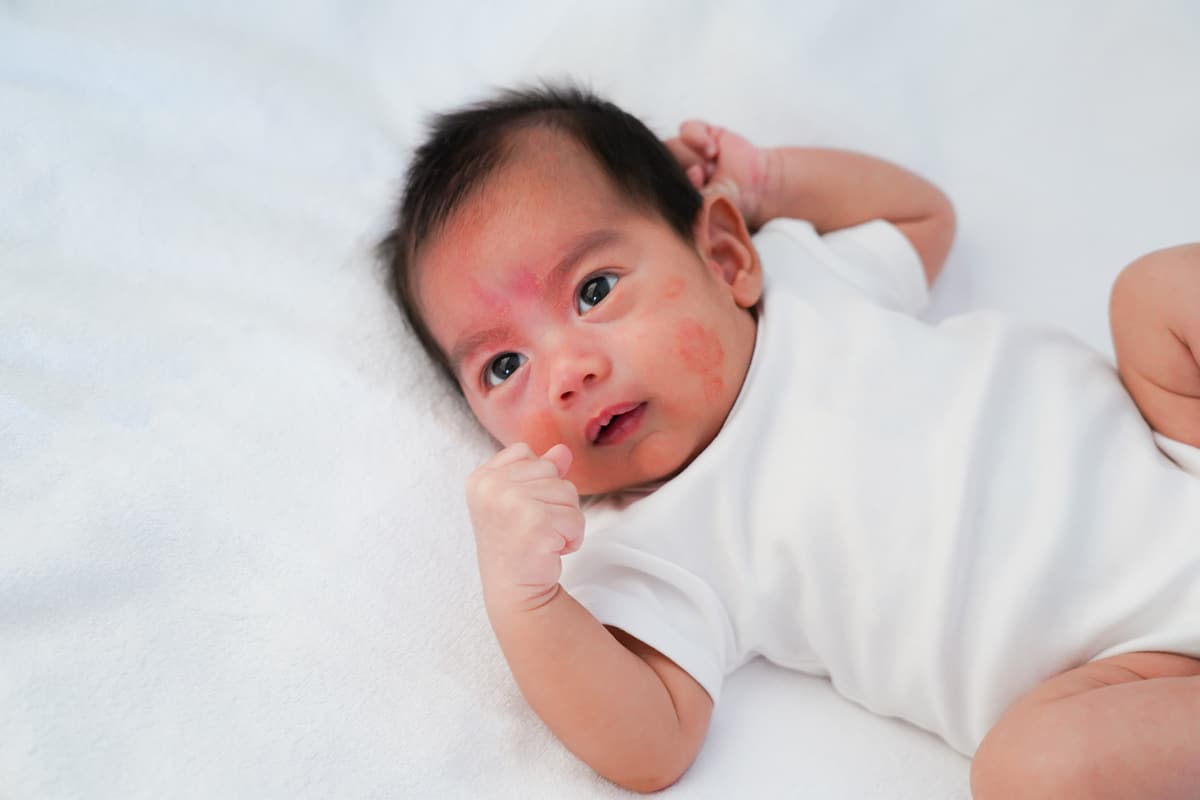
Eczema, or atopic dermatitis, is a chronic skin disorder that causes the skin to become dry, red, and itchy. It is one of the most common skin allergies in younger children, affecting around 10-20% of kids. It is an inflammatory condition that causes the skin’s protective barrier to weaken, making it more susceptible to irritants and allergens.
Causes:
- Genetic factors: Some people are born with a higher risk due to their genes.
- Environment: Dry climates, cold weather, and exposure to harsh detergents or soaps can trigger eczema (2).
- Allergens: Certain foods, dust mites, pollen, and pet dander can cause flare-ups.
Symptoms:
- Itchy skin: This is often the first sign. The itch can be severe enough to interfere with sleep.
- Red, inflamed skin: Affected areas may appear very dry, thickened, or scaly.
- Small, raised bumps: These may leak fluid and crust over when scratched.
Treatments:
- Moisturizers: To treat eczema, regular use of high-oil-content lotions can help keep the skin moist and relieve itching.
- Prescription creams: Topical corticosteroids or calcineurin inhibitors can reduce inflammation and itching.
- Light Therapy: Exposure to controlled amounts of natural sunlight or artificial ultraviolet light can improve symptoms.
- Oral medications: In severe cases, drugs that work throughout the body can be used under a doctor’s supervision.
2. Allergic Contact Dermatitis
Contact dermatitis is an allergic reaction that occurs when the skin comes in contact with a specific substance. It is common in kids who are often exposed to new products such as soaps, lotions, or detergents. Allergic Contact Dermatitis usually develops on the face, hands, or neck.
Causes:
- Exposure to allergens: This includes substances like nickel, rubber, dyes, cosmetics, fragrances, and poison ivy.
- Direct skin contact: The condition is triggered when the skin comes into direct contact with an allergen.
- Sensitization over time: Repeated exposure to an allergen can lead to the development of an allergic reaction.
Symptoms:
- Red rash or bumps: These are often the first signs of an allergic reaction.
- Itching: This can be severe and often increases at night.
- Dry, cracked, or scaly skin: This usually occurs if the dermatitis is chronic.
- Blisters and draining fluid: In severe cases, blisters may form, which can ooze and become crusty.
Treatments:
- Avoiding the allergen: Once identified, avoiding the allergen can prevent future reactions.
- Topical creams: Corticosteroid creams or ointments can help reduce inflammation and itching.
- Oral medications: Antihistamines can help alleviate itching, and in severe cases, oral corticosteroids may be prescribed.
- Wet dressings: Applying wet bandages over a corticosteroid can help soothe and heal the skin.
3. Hives (Urticaria)
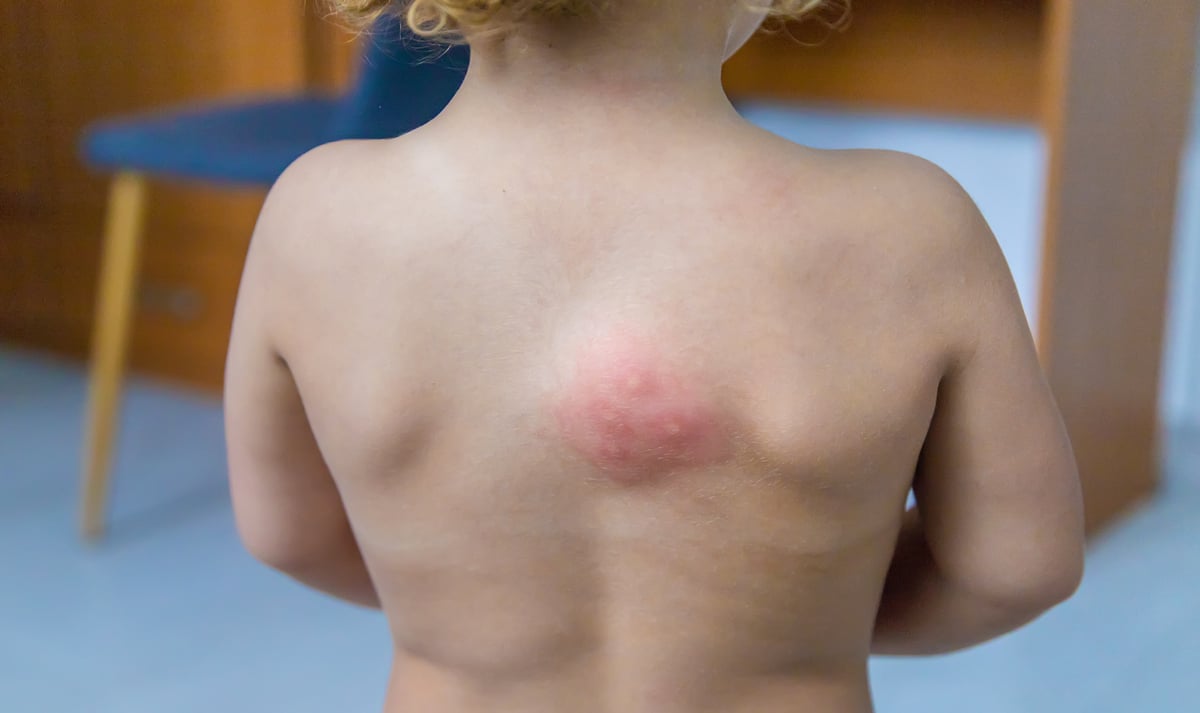
Hives are a type of skin rash that causes red, itchy and raised welts on the skin. They can appear anywhere on the body and vary in size and shape.
Causes:
- Allergic reactions: These can be triggered by certain foods, medications, or insect bites.
- Physical triggers: Exposure to sunlight, heat, cold, exercise, or pressure can cause hives.
- Medical conditions: Infections, illnesses, or autoimmune diseases can lead to the development of hives.
Symptoms:
- Red or skin-colored welts: These are often itchy and can appear anywhere on the body.
- Swelling: The welts may merge together and cause swelling, especially if they’re close.
- Flare-ups: Symptoms can come and go quickly, usually within 24 hours, but new ones may appear.
(Note: If your child develops these symptoms, seek immediate medical attention, as it could be a severe allergic reaction called anaphylaxis.)
4. Treatments
- Antihistamines: These medications can help relieve itching and prevent new hives from forming.
- Avoiding triggers: If a specific trigger is identified, avoiding it can help prevent future outbreaks.
- Corticosteroids: For severe cases, doctors might prescribe these medications to reduce inflammation.
- Epinephrine: If a severe allergic reaction causes hives, this emergency injection can be lifesaving.
4. Angioedema
Angioedema is a rare skin allergy that affects the deeper layers of the skin and tissue beneath it. It causes swelling, usually around the eyes and lips, but can also affect other parts of the body. In acute Angioedema, the swelling usually goes away within a few hours, but in chronic cases, it can last for several weeks.
Causes:
- Allergic reactions: This can be due to certain foods, medications, or insect bites.
- Genetic factors: Some people inherit a tendency to develop angioedema due to a gene mutation.
- Medications: Certain types of blood pressure drugs (ACE inhibitors) can trigger the condition.
- Unknown causes: In some cases, the cause of angioedema isn’t known.
Symptoms
- Swelling: This occurs beneath the skin, often around the eyes and lips, but it can also affect hands, feet, and throat.
- Skin color changes: The affected areas may become red.
- Pain or warmth: The swollen areas often feel painful and warm to the touch.
- Difficulty breathing: If the throat or tongue swells, it can cause difficulty breathing or swallowing.
Treatments:
- Antihistamines: These are used to reduce swelling, itching, and hives.
- Corticosteroids: These may be prescribed to control inflammation in severe cases.
- Epinephrine: This is an emergency treatment that can be used if the angioedema is severe and threatens to block the airway.
What causes skin allergies in kids?
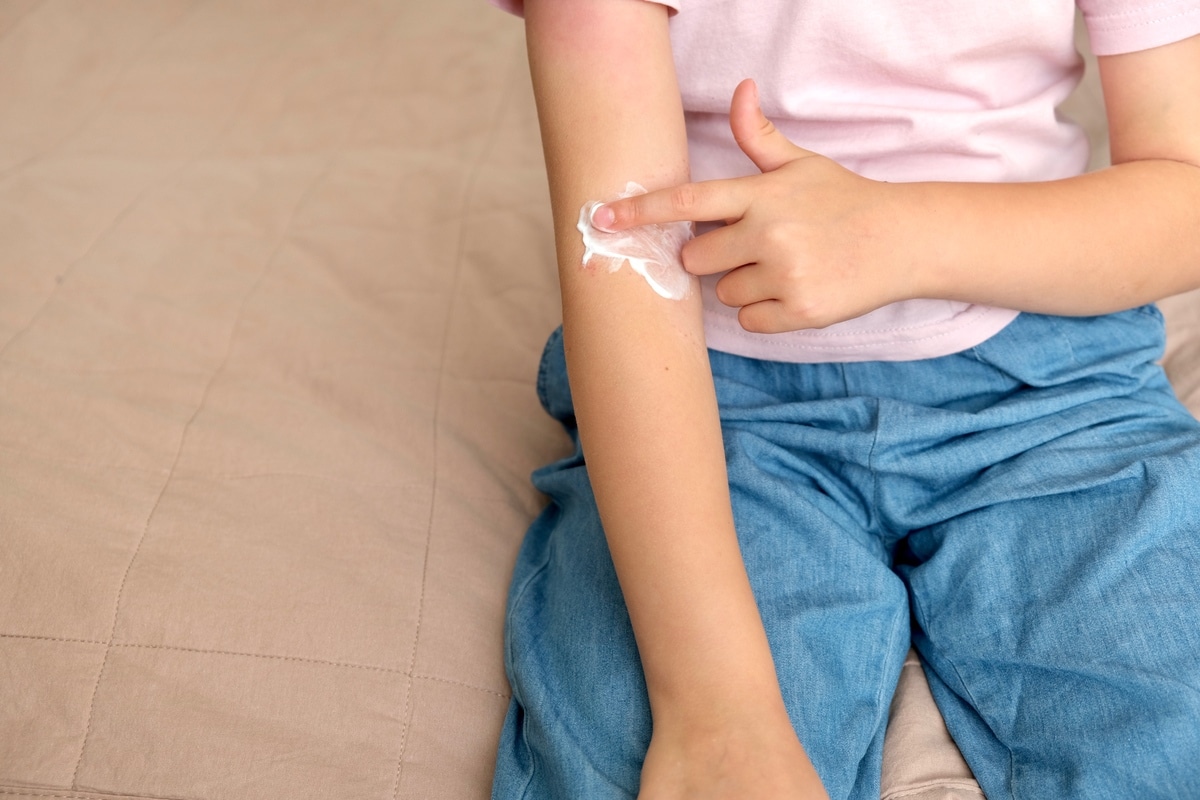
Skin allergies (3) in children are typically caused by an overreaction of the body’s immune system to certain substances. When the skin comes into contact with these allergens, it triggers an allergic reaction that can result in skin conditions like rashes or hives.
Common triggers for skin allergies in kids include:
- Certain foods: Foods like dairy, nuts, eggs, soy, and wheat are common triggers for skin allergic rash in children.
- Environmental factors: These can include pollen, mold, dust mites, and pet dander.
- Irritants: Substances such as soaps, detergents, and certain fabrics can irritate the skin and cause an allergic reaction.
- Medications: Some children may have allergic reactions to certain drugs, leading to a rash appears on the skin.
- Insect bites or stings: These can also trigger skin rashes in some children.
Role of Genetics and Environment in Skin Allergies
Both genetics and environmental factors play a significant role in the development of skin allergy in children.
Genetics: If a child has a family history of allergies, they are more likely to develop skin allergic rashes. This is because certain genes associated with the immune system’s response to allergens can be passed down from parents to their children.
Environment: A child’s environment also plays a crucial role in the development of skin allergic rash. Exposure to allergens at a young age can sensitize the immune system and increase the risk of developing allergies. Moreover, children who live in environments with a high level of pollutant or bacterial skin infection may be more prone to skin allergies.
What are the common symptoms of skin allergy in kids?
Skin allergies can cause a range of symptoms in children, and it’s important to be able to recognize these so that appropriate action can be taken. Here are the common signs:
- Rashes: One of the most apparent allergy symptoms is the development of rashes on the skin. These can vary in appearance and may be localized or widespread.
- Itchy Skin: This is a frequent complaint among children with skin allergies. The itchiness can be mild or severe, and it typically accompanies a rash.
- Irritated Skin: Allergic skin reactions often result in irritated, red, and inflamed skin. The skin may also become dry or flaky.
- Swelling or Hives: Some children may develop hives (also known as chronic urticaria) or swelling on the skin in response to an allergen. Hives are raised itchy bumps that can appear suddenly and disappear within a few hours.
- Runny Nose or Watery Eyes: While these are more common with respiratory allergies, they can also occur in response to skin allergens.
When to Consult a Doctor?
It’s crucial to consult your child’s healthcare provider if your child’s symptoms persist, worsen, or interfere with their daily activities. Moreover, seek immediate medical attention if:
- Your child has difficulty breathing or swallowing, which could indicate a severe allergic skin reaction.
- The skin reactions are accompanied by fever, joint pain, or other symptoms that might suggest a more systemic illness.
- The child’s symptoms are associated with mouth disease or other skin allergies that are not easily managed at home.
Remember, early detection and treatment of skin allergies can help prevent complications and improve your child’s quality of life.
How can you treat skin allergies in kids?
When it comes to treating skin allergies in children, the main goal is to relieve symptoms and prevent future reactions. The first step is to identify and avoid allergic triggers (4) as much as possible. This can significantly reduce the frequency and severity of allergic reactions.
Over-the-counter medications like antihistamines and topical creams can help to manage symptoms such as itching and redness. It’s important to follow the instructions on these medications and consult a healthcare provider if symptoms persist or worsen.
Moreover, maintaining a regular skincare routine can also be beneficial. This may include using hypoallergenic soaps and moisturizers to keep the skin hydrated and prevent irritation.
Specific Treatments for Different Types of Skin Allergies
The treatment for skin allergies varies depending on the type of skin condition and its severity. For example:
- Eczema: Topical corticosteroids are often used to reduce inflammation and itching. In severe cases, prescription medications may be required.
- Contact Dermatitis: Avoidance of the allergen is the best treatment. Topical creams or ointments can also help to soothe the skin and reduce inflammation.
- Hives (Urticaria): Antihistamines are commonly used to relieve itching and reduce the appearance of hives (or acute Urticaria).
Furthermore, given the complexity and variability of skin allergies in kids, personalized treatment plans are crucial. Each child’s symptoms, allergic triggers, and response to treatment can differ widely. Therefore, a treatment plan should be tailored to their specific needs and adjusted over time as necessary.
Conclusion
To sum it up, skin allergies can be a nuisance for children, but they can also significantly impact their daily lives if left untreated. With the right knowledge and management strategies, however, these allergic reactions can be controlled and minimized. By working closely with your child’s healthcare provider and implementing preventive measures, you can help your child live a healthy life without the burden of skin allergies. Remember, early detection and treatment are key in managing skin allergies in children.
FAQs
Do childhood allergies go away?
Yes, many childhood allergies can fade away. Studies suggest that about 80% of children with allergies to certain foods may outgrow them by their teenage years. It's also possible for a baby's skin allergies to improve over time with exposure to allergens.
Is it normal for kids to have allergies?
Yes, it's completely normal for kids to have allergies. Allergies are one of the most common health issues in children. A variety of triggers like dust, pollen, certain foods, or pet dander can cause them. With proper care and management, they're usually not a cause for concern.
At what age do allergies start?
Allergies can develop at any age, with many first appearing during childhood or early adulthood. However, they can also manifest later in life, even in individuals over 50 years old. The onset of allergies greatly varies from person to person.
How long does skin allergy last in kids?
Skin reactions or allergies in kids can vary in duration. Individual hives may last from a few hours to a week and, in some cases, even longer. With treatment, symptoms of skin allergies can persist for 2 to 4 weeks. Severe or chronic conditions may take longer to resolve.
How can I treat my child’s allergies naturally?
Natural remedies for allergies in children include maintaining a clean environment to reduce allergen exposure, using saline rinses for nasal allergy symptoms, and introducing a diet rich in fruits and vegetables, which can boost the immune system. However, always consult with a healthcare provider before starting any new treatment regimen.
References
1. Common skin allergies- https://www.webmd.com/allergies/common-skin-allergies-kids
2. Eczema- https://www.mayoclinic.org/diseases-conditions/atopic-dermatitis-eczema/symptoms-causes/syc-20353273
3. Causes Skin Allergy in Kids- https://my.clevelandclinic.org/health/diseases/6951-skin-conditions-in-children
4. Treatments- https://www.aaaai.org/conditions-treatments/allergies/skin-allergy

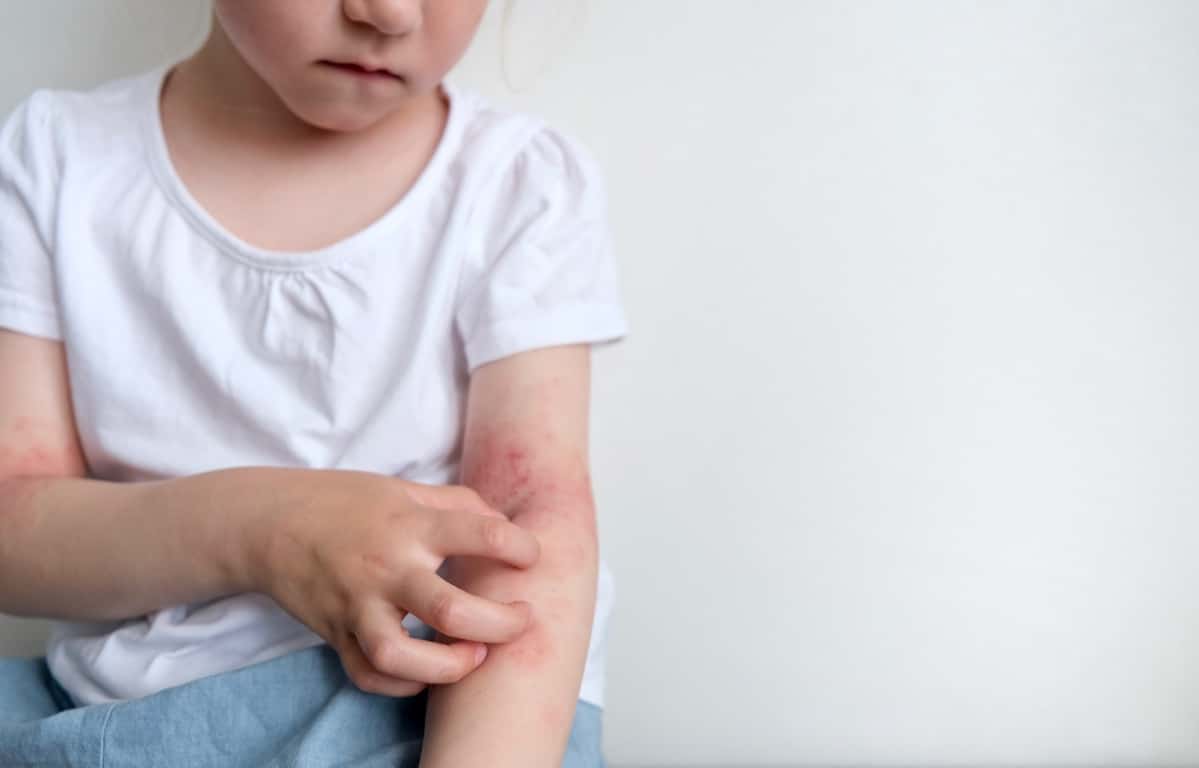


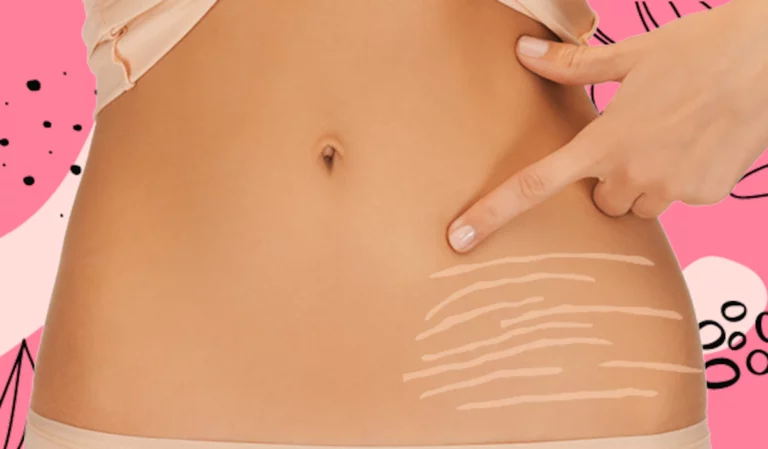





![Home Renovation Guide [2025]](/app/uploads/2021/04/design-hacks-1-378x300.jpg)
